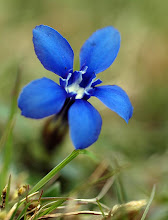



All the goosegrass under the hedge outside my garden is covered with frothy bubbles of cuckoo spit – and here’s one of the perpetrators, the nymph of a frog-hopper Philaenus spumarius. Adult frog-hoppers, or as they’re known in the US, spittlebugs, ping around the vegetation like little grasshoppers, plugging their feeding tube into plant stems and siphoning off sugar, but the nymph goes one stage further, feeding on the sugar and blowing itself a coccoon of bubbles to keep itself moist while it completes its development, eventually becoming enclosed in a hard, waterproof covering that allows it to live outside of its bubblebath. Adult frog-hoppers have very variable colour paterns – you can see some of them at http://www.britishbugs.org.uk/homoptera/Aphrophoridae/Philaenus_spumarius.html




























































